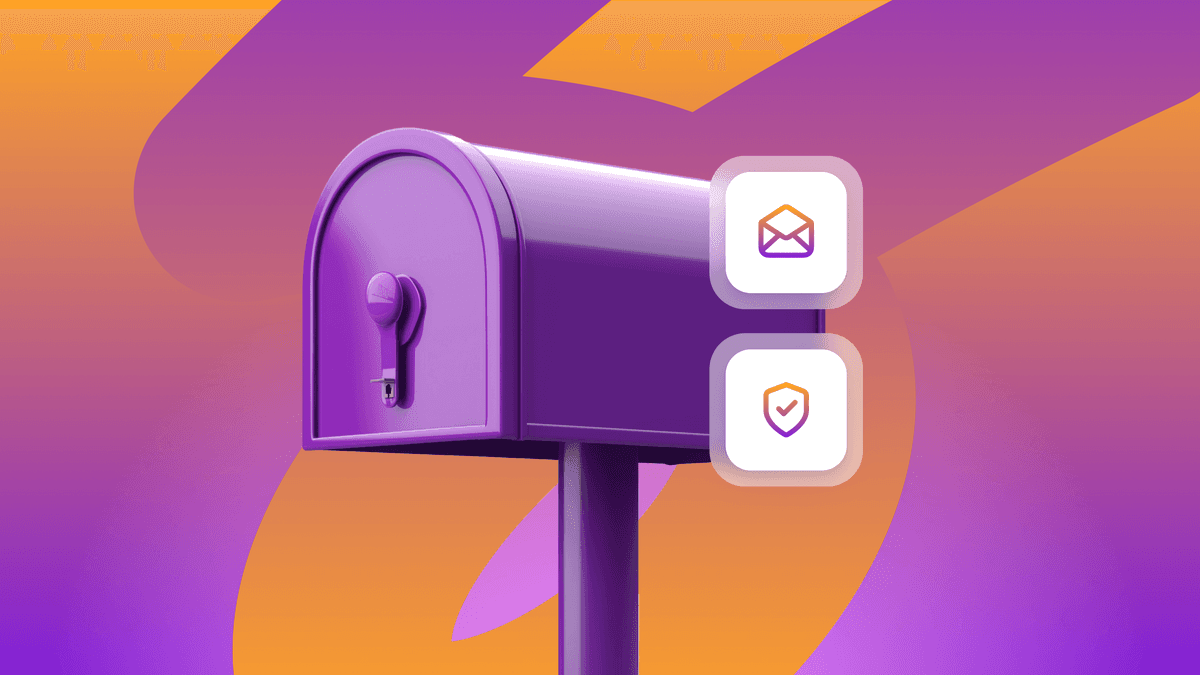Deliverability Indicators: Email Opens
Published on February 13, 2025/Last edited on February 13, 2025/8 min read


Alison Gootee
Compliance and Deliverability Enablement Principal II, BrazeWith an estimated 360+ billion sent daily in 2024 (a 4.1% increase over 2023’s numbers), email continues to be an integral tool in brands’ marketing arsenal. Recent figures indicate that email’s ROI can be up to 42:1 when this channel is leveraged correctly. Since its efficacy relies largely on a sender’s ability to reach the inbox, adherence to deliverability best practices remains the foundation of any impactful email marketing program.
As the industry continues to evolve, your ability to measure success is dependent on your ability to analyze and interpret your sending results. But what metrics matter, and which aren’t as important? What should you monitor to ensure you’re maintaining high deliverability, and how should you react when faced with unexpected or unpleasant outcomes? Join us as we take a deeper look at each of the signals that impact your deliverability. This is Deliverability Indicators, our ongoing blog series that provides a comprehensive breakdown of the factors that influence your email sender reputation.
Continuing our Deliverability Indicators series, this edition is all about opens! And while it may seem straightforward, this metric is actually anything but. Ready to learn more? Let’s get started!
This edition’s focus: Email Opens
Alternate terms: Pixel loads
What email opens are
Ostensibly, open rates measure whether an email was opened by its recipient after being delivered. However, what’s being measured is not really an “open.” Mailbox providers don’t share what happens to a message post-delivery, so what’s actually being counted is whether an invisible 1x1 pixel has been loaded, which functions as a proxy for mail being opened.
Why they happen
An open event is generated by an Email Service Provider (ESP), such as Braze, when an open tracking pixel is fetched by the receiving server. That’s because, theoretically, images are only loaded when a message is opened. However, that theory is no longer wholly accurate (if it ever was), thanks to image pre-fetching as a result of services like Apple’s Mail Privacy Protection. These days, an open event is more likely to indicate inbox placement as opposed to a human being actually selecting your message and choosing to read it. While opens may have lost some value as an engagement metric, they do at least serve as a substitute for inbox placement reporting, since mailbox providers (MBPs) don’t provide that data directly.
Who uses them
Contrary to popular belief, MBPs are not measuring or reporting opens—we are! Mailbox providers evaluate engagement, but they have a slew of other data to use that we don’t have access to, like time-to-open, time-to-click, forwards, replies, deleted, etc. In the absence of additional data, pixel loads and clicks are the most accessible ways that senders (both brands and their ESPs) can assess email engagement.
When to celebrate
Open rates vary widely based on sender practices, recipient behavior, and reporting capabilities. Braze offers reports that can either exclude or include machine opens (like Apple’s MPP) in an effort to provide more accurate engagement data. Typically, a unique open rate over 25% (excluding machine opens) indicates widespread inbox placement, provided your delivery rate is also high.
When to worry
If your unique open rate dips below 20%, either overall or at a particular MBP, mail is likely reaching the spam folders of at least a portion of your audience. There may also be cause for concern if you’re seeing a steady downward trend in your engagement rates, as spam folder placement tends to be gradual as opposed to sudden. Likely, this was precipitated by a decrease in positive engagement (like opens and clicks) and/or an increase in negative feedback like spam complaints or mail languishing unread. You may also notice increased delays or blocks as a precursor to mail being filtered as spam.
Optimizing for high open rates
Though Apple’s MPP and other instances of image pre-fetching has disrupted the tracking of email opens, this metric is still a valuable way to measure campaign performance, even if it’s more likely to correlate with inbox placement rather than a human being tapping the subject line to see what’s inside. In order to most accurately determine whether users are receiving your mail in their inboxes (and hopefully opening them) keep these factors in mind:
Tracking pixel placement
For context, Gmail commonly “clips” emails that exceed 102 kilobytes (KB). When clipped, the remaining content is hidden and a link to "View the entire message" is displayed. Most ESPs tend to place the open tracking pixel at the bottom of the email, potentially impacting opens if users elect not to click and view more. If your campaigns tend to be on the heavier side, you could move the open tracking pixel to the top of the message, increasing the likelihood that opens will be tracked from the inbox, even when users don’t click through.
Subject line strength
Subject lines should let recipients know what the email is about, and should never be misleading. There is a lot of leeway for creativity and brand expression, but use caution when taking artistic liberties. If subscribers feel that a subject is offensive or inaccurate, they might unsubscribe or worse, report the message as spam and damage your reputation. If that’s not enough to scare you off, the law even requires that the, “subject line must accurately reflect the content of the message” in the US, and similar laws exist globally.
A name recipients will recognize
Similar to the subject line, your “from” name can be a great way to encourage engagement, either by reinforcing familiarity, or building anticipation. You can send from a brand name like ACME Co., as an individual person like Alison from ACME Co., or even as a specific sale or product like ACME Co’s Air Conditioner Sale. Same rules apply, though! Never rely on deception to attract opens, and send only as the brand/product/person that you actually are (CAN-SPAM requires it!).
Content that feels familiar
Email engagement relies on sending mail to people who both want and expect it, so campaign content should share branding (including colors, themes, logos, and voice) with your website, app, and other output so that people know it’s really you in their mailbox. It’s also important to maintain consistency across all of the channels you’re using so customers will recognize your brand and its value—as well as orchestrate messaging so customers get outreach when they’re likely to engage and on the right channel for each specific message.
Keep your promises
Send emails in alignment with the expectations that you established during subscription. If you promised a coupon in exchange for an email address, then send that coupon! If recipients initially opted in for monthly newsletters, don’t send weekly marketing emails. If you want to make changes to your content or cadence, ask subscribers before assuming they’ll continue opening after an increase in emails or a shift in topic or tone.
Make smart segments
Everyone already knows about sending to people who have previously engaged, or setting up an automation sequence for new subscribers. Go beyond the basics and think about the subscriber experience! Maybe first-time buyers should be treated differently from those who are frequent shoppers, or perhaps seasonal customers need a different approach than those who order year-round. Subscribers open the mail that is relevant to them—review the data you have on hand to help determine who should receive what, when.
Mitigating low open rates
If your email opens appear inadequate, there are some immediate steps you can take:
- First, verify that opens are being tracked properly. Send yourself a test message, and see whether an open event is generated in your ESP. There may be a technical issue that the ESP’s Support team can remedy, rather than an underlying inbox placement problem.
- Make sure mail isn't being clipped by Gmail. Send yourself a test to a Gmail account to verify whether they’re truncating the message and including the “View the entire message” link. If mail is being clipped, you can either reduce its size, or move the tracking pixel to the top of the message.
- If everything is working as expected on a technical basis and Gmail isn’t clipping your messages, then a lackluster open rate tends to indicate spam folder placement. Though there is no quick fix for a diminished sender reputation, the road to remediation is satisfyingly straightforward! In short, stop sending mail to people who don’t want it, and only send mail to those who do. As for how to accomplish that? Check out our additional resources like our blog, previous webinars, lessons, and our Master Email Deliverability learning path. Should you prefer a more hands-on approach, Braze Deliverability Services are here to lend that helping hand.
Key Takeaway
These days, opens may not be the most precise indication of subscriber engagement. However, they continue to be valuable as marketers look for ways to measure campaign success outside of simple ROI and monetary conversions. “Opens” aren’t truly opens, but they are a decent proxy for measuring inbox placement and alerting senders to potential deliverability declines, particularly when taken into consideration with the full scope of results including bounces, complaints, and unsubscribes.
Can’t get enough? Check out Deliverability Indicators: Understanding Email Bounces and What They Mean For Customer Engagement.
Related Tags
Be Absolutely Engaging.™
Sign up for regular updates from Braze.
Related Content
View the Blog
Look out: Outlook's new email requirements and what they mean for Braze senders

Alison Gootee

How the Braze Data Platform enhances flexibility and fosters collaboration

Sahiz Kaur

Customer churn prediction: Using data for smarter retention
